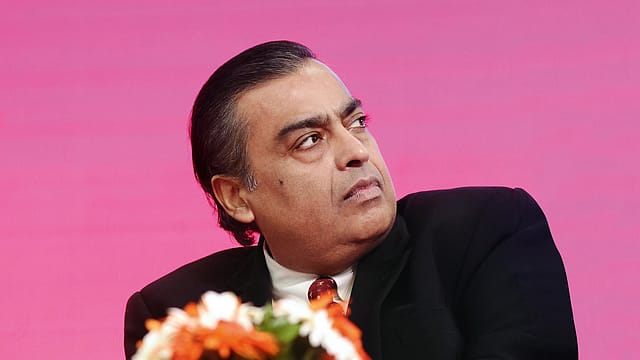RIL may turn net debt-free after solar investments
ADVERTISEMENT

Mukesh Ambani-led Reliance Industries Ltd (RIL), India’s most profitable company, is likely to turn net debt-free following completion of its five Giga factories for solar energy infrastructure. The oil-to-telecom conglomerate is spending an average of over ₹30,000 crore every quarter to complete the Giga factories and the additional investments in 5G and retail businesses. According to sources in the know, the 5G investment is almost over and the debt-funded retail expansion is not required any more.
RIL has net debt of ₹1.15 lakh crore on its books. Reaching net debt-zero status needs either the capital expenditure run rate to be reduced, or the commencement of additional cash flows. “While the company [can] continue capital expenditure at this run rate, it requires either a new revenue stream or increase in cash flow at the retail or petrochemicals business to reduce the net debt,” says an executive in the know. Else, net debt will start shrinking once the heavy solar investments are over by FY26, adds the executive.
RIL has ₹3,50,453 crore as gross debt, excluding spectrum payment to the government in December. However, the company has maintained high cash reserves on its books, worth ₹2,34,988 crore cash and cash equivalent, which are majorly in fixed deposits, certificate of deposits with bank and government securities and bonds. Net debt stood at ₹1,15,465 crore with net debt to EBITDA at 0.6.
January 2026
Netflix, which has been in India for a decade, has successfully struck a balance between high-class premium content and pricing that attracts a range of customers. Find out how the U.S. streaming giant evolved in India, plus an exclusive interview with CEO Ted Sarandos. Also read about the Best Investments for 2026, and how rising growth and easing inflation will come in handy for finance minister Nirmala Sitharaman as she prepares Budget 2026.
The company, which made a profit of ₹58,698 crore in the first nine months of this fiscal, spent ₹95,066 crore as capital expenditure in this period. In FY24, capex was ₹1,31,769 crore compared to ₹1,41,809 crore in the previous year. The high investments were primarily because of 5G network expansion, scaling up of the retail business, augmented production capacities in the oil and gas segment and projects in the petrochemicals vertical.
In December, RIL had raised $3 billion from a consortium of 11 banks, marking its largest borrowing deal in nearly two years. The loan is intended to refinance existing loans maturing in this year and that would come around to $2.9 billion, including interest payments. The company had arranged syndicated term loan facilities of $4.45 billion, ECA-supported facilities of $2.83 billion, and issued ₹20,000 crore of 10-year non-convertible debentures (NCDs) in the last fiscal to raise capital for its projects as well as for repayment of loans.
“We maintain an appropriate mix of fixed and floating rate liabilities to limit the translation of high interest rates into finance cost,” says an official. The company uses a combination of natural and market hedges to protect against foreign exchange risk. It has a tight internal risk management framework to ensure an adequate cushion to counter market disruptions and meet its short-term obligations. “The high cash reserve on books will help the company in finding the right balance in financing cost outgo,” adds the official.
RIL is set to launch its new energy venture in the coming months, beginning with the first phase of a 20GW solar photovoltaic (PV) manufacturing facility. Ambani has an ambitious target to build new energy business to the size of its petrochemicals business ($7.5 billion EBITDA in FY24) in the next five to seven years.
The Giga factories will be integrated manufacturing facilities in the solar value chain—for manufacturing of PV cells and finally, energy storage. There will be separate factories for manufacturing solar PV modules, battery, fuel cells, power electronics and green hydrogen. In 2025, RIL plans to commission the 20 GW solar power generation project. The power output will be fully used for its green hydrogen production and Ambani plans to produce green hydrogen at $1 a kg.
Once the cash flow from new energy business starts, debt will see a decline. Besides, EBITDA margin from the retail business was at 8.6% in the first nine months of this fiscal. It was 8.4% in the corresponding period last year.
The oil-to-chemicals business also had an EBITDA margin of 8.6% in the April-December period, while Jio Platforms Ltd had an EBITDA margin of 50%.
RIL had turned a zero net debt company in March 2021, thanks to the stake sale in Jio Platforms and Reliance Retail Ventures. However, it was short-lived; the company could not maintain this status beyond three months because of its aggressive investments.
